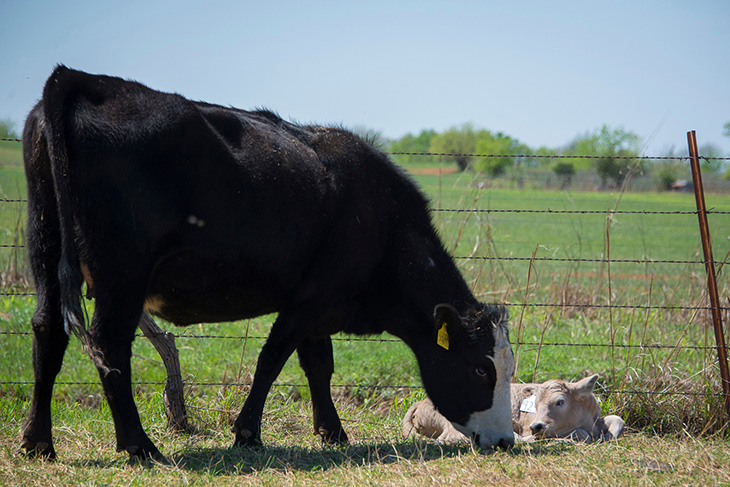
Scours management begins well in advance of spring calving
Friday, December 18, 2020
Oklahoma State University Extension experts recommend cattle producers with spring calving herds that have had diarrhea problems contact their large animal veterinarians now to plan management strategies.
Commonly referred to as scours, calf diarrhea can be caused by factors such as bacteria, viruses, parasites, toxins, congenital conditions or nutrition. Many causes of scours are contagious, so scours can become a concern for the entire calf crop. A severe case can result in animal death.
“Producers should discuss treatment plans and protocols well in advance,” said Dr. Rosslyn Biggs, OSU Extension veterinarian and director of continuing education for the university’s College of Veterinary Medicine. “Having these types of discussions saves time, energy and dollars, and it improves overall animal welfare.”
Aside from the lost calves, other direct costs can include labor charges, medications and laboratory fees. Indirect costs include subsequent bouts of pneumonia and poor performance that may affect an animal throughout its lifetime.
“The veterinarian will be up to date on the latest developments in vaccines and their implementation relative to the producer’s area, letting them customize a vaccine protocol to meet the goals of a specific operation,” Biggs said. “Ideally, that relationship should not begin with a first meeting at 2 a.m. dealing with an emergency.”
There are several benefits to developing a good client-patient-veterinarian relationship:
- Enhancing the evaluation of herd health protocols.
- Improving biosecurity measures in the operation.
- Strengthening the profitability and sustainability of both the cow-calf operation and local veterinary services.
“A vaccine protocol is not cookbook science,” said Dr. Barry Whitworth, OSU Extension veterinarian and food animal quality and health specialist. “What worked best one year may not be the best option the next. Also, it’s basic human nature that a good existing relationship with your veterinarian may make him or her more likely to assist with an after-hours emergency.”
A study by the U.S. Department of Agriculture’s National Animal Health Monitoring System reported that 14% of calves that died within the first three weeks of life were victims of scours. Given there is a long list of factors that contribute to this ailment, it is often difficult to pinpoint one single intervention that will eliminate the problem.
“Success occurs when opportunity meets with preparation,” said Glenn Selk, OSU Extension emeritus animal scientist and managing editor of the university’s popular Cow-Calf Corner newsletter and weekly SUNUP television program video segment. “Preparing now ahead of next spring’s calving season can help increase the chances of success. The whole point is to get a healthy calf off the ground in the most cost-effective manner possible.”
Detailed information about Oklahoma’s cow-calf industry is available online through OSU Extension fact sheets. Additional best management practices for cow-calf operations is available through all OSU Extension county offices.
OSU Extension is one of two state agencies administered by the university’s Division of Agricultural Sciences and Natural Resources and is a key part of OSU’s state and federally mandated teaching, research and Extension land-grant mission.
MEDIA CONTACT: Donald Stotts | Agricultural Communications Services | 405-744-4079 | donald.stotts@okstate.edu
